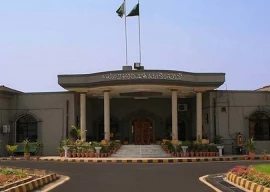
It is said that those who cannot learn from the past are doomed to repeat it. Such is the case for the disaster prevention authorities in Punjab, where a lack of timely drain cleaning continues to expose the masses, livestock and agriculture in low-lying areas to the persistent risk of flooding every monsoon season.
As per reports obtained by the Express Tribune from the Provincial Disaster Management Authority (PDMA) of Punjab, certain storm drains in Dera Ghazi Khan and Kohe Sulayman may cause urban flooding during the upcoming monsoon rains, which could damage crops and villages.
According to the local people, one of the main reasons for flooding in these rainwater drains is the obstructions created in the natural channels of the drainage network due to their infrequent cleaning. Reportedly, there are hundreds of rainwater drains in Punjab, but amongst them the drains of Sialkot, Shakargarh, Rawalpindi, and Narowal are well-known.
Mohammad Ashraf, a resident of Narowal, revealed that last year his area was severely damaged due to flooding in the Nala Daik. "My livestock were killed while agricultural crops were also destroyed. The local people have occupied the land surrounding the Nullah. These drains have never been cleaned therefore, when it rains more than usual, they get flooded," resented Ashraf.
According to Sani Zahra, an urban construction expert, one of the primary reasons behind urban flooding was the lack of cleaning of storm drains and encroachments on the sides of roads. "Take the example of the Rawalpindi drain, where people have not only encroached near the drain, but have also thrown garbage into it. Similarly, the situation is the same for other rain drains. When these drains are not cleaned in time, then during the monsoons, when the water exceeds its capacity, they become flooded. It should be noted that government agencies focus on the cleaning of drains within cities, but not much attention is paid to the cleaning of storm drains in other areas," observed Zahra.
Commenting on the matter, Chaudhry Mazhar Hussain, spokesperson of PDMA Punjab said, "The expected rainfall this time is likely to be less than 50 mm. Therefore, there is no serious risk of flooding from the drains."
On the other hand, Director-General PDMA, Irfan Ali Kathia shed light on the scale of destruction urban flooding could instigate in the event of an unprecedented rain spell. "This year's monsoon rains caused the deaths of 84 people while 224 others were injured. Deaths were also caused by lightning, electrocution, collapsed houses and dilapidated buildings. Similarly, 44 cattle died due to flooding while 100 houses were completely destroyed and 145 partially affected," he informed.
According to the data provided by the PDMA, the Nala Daik passes through the Kangra area, which has a capacity of 22,000 cusecs of water. The Nala Aik l passes through Ara area that can hold 2,000 to 13,000 cusecs of water. The Nala Palkhu passes through Sialkot with a capacity ranging from 500 to 2,000 cusecs. Similarly, Nala Palkhu Wazirabad has a capacity of 2,500 to 5,000 cusecs while the capacity of Nala Bein Shakargarh ranges from 1,600 to 2,600 cusecs. Furthermore, the capacity of Basantar Narowal ranges from 700 to 7,500 cusecs, while the capacity of Nullah Lai Rawalpindi is up to 20 feet.

1718122402-0/will-ferrel-(1)1718122402-0-405x300.webp)


1726819153-0/BeFunky-collage-(18)1726819153-0-165x106.webp)













COMMENTS
Comments are moderated and generally will be posted if they are on-topic and not abusive.
For more information, please see our Comments FAQ